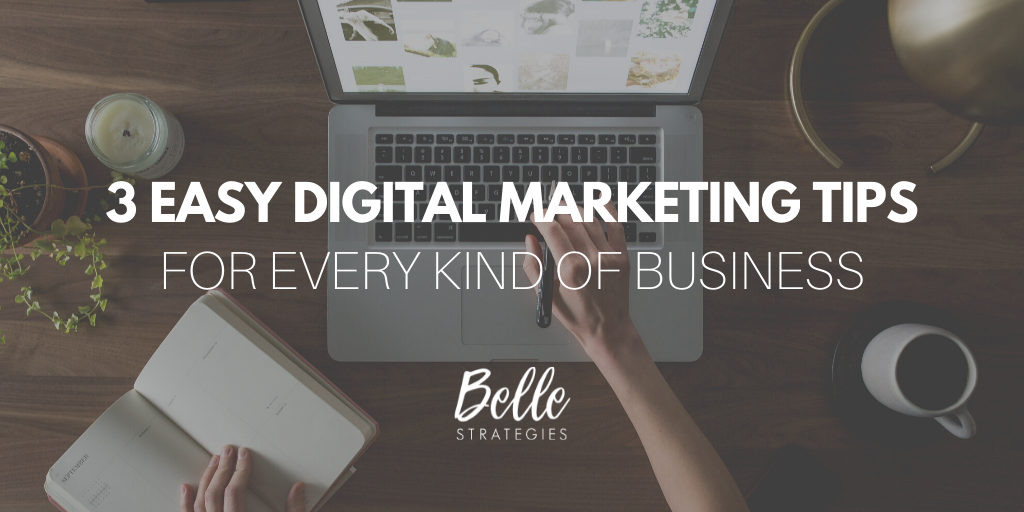With nearly two decades in the industry, Belle Strategies Owner Rachel Creveling is a seasoned business consultant who crafts comprehensive frameworks that integrate operations, marketing, sales and HR to position her clients for optimal success. She excels at incorporating trending tech ethically and studied Strategies for Accountable AI at Wharton.
Protecting Your Data: The Role of AI in Cybersecurity

What is the Role of AI in Cybersecurity?
At this point in time (May 22, 2024) many people view AI as something to fear. The unknown element paired with the fact that AI is more adept than humans in many areas makes people uneasy.
This is a normal reaction – people view the unknown as something to fear.
- Remember how nervous people were to use credit cards instead of checks?
- Go farther back and you’ll see the commotion that took place when cars began replacing horses.
With nearly two decades in the industry, Belle Strategies Owner Rachel Creveling is a seasoned business consultant who crafts comprehensive frameworks that integrate operations, marketing, sales and HR to position her clients for optimal success. She excels at incorporating trending tech ethically and studied Strategies for Accountable AI at Wharton.
The Best AI Tools for SEO

With nearly two decades in the industry, Belle Strategies Owner Rachel Creveling is a seasoned business consultant who crafts comprehensive frameworks that integrate operations, marketing, sales and HR to position her clients for optimal success. She excels at incorporating trending tech ethically and studied Strategies for Accountable AI at Wharton.
Ethical and Efficient AI Marketing Tips

Hello! I’m Rachel Creveling, and I’m excited to welcome you to AI Marketing Girl, my new website dedicated to ethical AI usage.
As a long-time marketing consultant, staying on top of new digital trends and platforms is part of my day-to-day work. I’ve been testing artificial intelligence since OpenAI first introduced chatGPT at the end of 2022.
Now, new platforms specifically designed for AI usage pop up nearly every day. The integration of AI tools in our commonplace tech (hello Apple Intelligence) only further proved the need for an ethical AI marketing resource. So here we are!
With nearly two decades in the industry, Belle Strategies Owner Rachel Creveling is a seasoned business consultant who crafts comprehensive frameworks that integrate operations, marketing, sales and HR to position her clients for optimal success. She excels at incorporating trending tech ethically and studied Strategies for Accountable AI at Wharton.
3 Easy Digital Marketing Tips for Every Business

Digital marketing is understandably overwhelming if you’re just getting started. There are so many different techniques and that makes it hard to know where to spend your time and money.
Here are three easy digital marketing tips that any brand can use to take the confusion out of it.
With nearly two decades in the industry, Belle Strategies Owner Rachel Creveling is a seasoned business consultant who crafts comprehensive frameworks that integrate operations, marketing, sales and HR to position her clients for optimal success. She excels at incorporating trending tech ethically and studied Strategies for Accountable AI at Wharton.
What’s all this talk about Subtweeting?
Subtweeting: it’s the internet equivalent of talking about someone behind their back or insulting someone via stealth. For example, if someone tweets, “Some people really need to mind their own business,” without mentioning who they are referring to, that would be considered a subtweet.
A subtweet specifically means you are commenting about someone but you do not tag their handle.
For those people who are new to Twitter, an @ symbol followed by a person’s Twitter username is known as a Twitter mention. This means that they will receive a notification whenever you include them in a tweet, and other people will be able to see the link to their Twitter account. The person mentioned will keep receiving notifications related to the tweet in which they were mentioned.
Subtweets often involve vague language, sarcasm, or passive-aggressive comments to convey the message without directly addressing the subject.
Subtweets are distinctly not what Twitter set out to encourage, but they’re here and they’re happening. It once again shows how social networks are always more controlled by their users than by their infrastructures.
With nearly two decades in the industry, Belle Strategies Owner Rachel Creveling is a seasoned business consultant who crafts comprehensive frameworks that integrate operations, marketing, sales and HR to position her clients for optimal success. She excels at incorporating trending tech ethically and studied Strategies for Accountable AI at Wharton.
Facebook introduces ‘missed call’ ads for feature phones
Facebook is going to debut its ‘missed call’ ads in India, in a bid to connect advertisers with a large untapped market of feature phone users in the country.
The feature allows users to press a button to place a call to relevant advertisers and then disconnect it. The user then receives a call back playing a pre-recorded message, detailing offers and discounts by the advertiser. These ads will allow users to request content, such as game scores, music or celebrity news, by clicking on a mobile advertisment and placing a missed call company. This way people can recieve branded content without using airtime or data.
The missed call unit was part of an announcement Facebook put out Wednesday touting its expanding reach in markets outside of North America and Europe. Often called “the next billion,” the market includes areas in which feature phones are still the predominant mode of mobile communication.
It will be interesting to see if the ‘missed call’ ad makes its way to our neck of the woods.
With nearly two decades in the industry, Belle Strategies Owner Rachel Creveling is a seasoned business consultant who crafts comprehensive frameworks that integrate operations, marketing, sales and HR to position her clients for optimal success. She excels at incorporating trending tech ethically and studied Strategies for Accountable AI at Wharton.
3 Quick Tips to Increase Blog Traffic
Use Pinterest
When you write a blog post, you need to drive traffic to it for a good return on investment (ROI). Pinterest is increasingly becoming a site where people go to read the articles of their choice. Make sure when you pin your blog you:
- Write a brief summary from the piece that relates to your specific board
- Find an image that catches the eye
- Directly link to your blog
Twitter is the best platform to build a focused list of followers. Make sure you schedule your blog to post to Twitter at least 3 times a day. And don’t forget to use hashtags! Tweets with hashtags receive two times more engagement than those without.
Share Other’s Work
Reach out to other bloggers you like and write them a quick note telling them how much you’ve enjoyed reading their posts, find them on Twitter, follow and re-tweet their posts. Building connections is what turns one time readers into followers. They will also be more likely to follow you and share your blogs!
Stay tuned for more tips on increasing page traffic :0)
With nearly two decades in the industry, Belle Strategies Owner Rachel Creveling is a seasoned business consultant who crafts comprehensive frameworks that integrate operations, marketing, sales and HR to position her clients for optimal success. She excels at incorporating trending tech ethically and studied Strategies for Accountable AI at Wharton.
Mashable’s How to: Create a Successful Company Blog
So you know you need to blog, and you’re convinced you ought to write about something you’re passionate about and that speaks to your customers. How can you create something that people will want to come and read every day? Here are some tips to create a successful company blog from our friends at Mashable:
1. Be authentic
The thing that kills most blogs, in my view, is when you can tell that the writer is just going through the motions. You need to find a “voice” that is authentically yours. People will get used to your style and your style will become your signature.
2. Be transparent
The “old school” way of getting media attention was to submit press releases. These were artificially crafted documents that were filled with glowing reviews of your company. In short, they felt fake. The best way to establish your voice is to be transparent.
Be willing to talk like a human being. Be willing to show feelings and a point of view. Let your inner self come out rather than your “inner bullet point.” Don’t use too much lingo. Don’t feel like your prose has to sound like it was crafted by a university professor. Just speak!
3. Get inside your readers’ minds
I give this advice often and in many scenarios, including public speaking. When people speak to many audiences, they sometimes get into a canned routine. They give the same presentation no matter which crowd they’re addressing. The key is that each time you present, you need to think about who is in the audience and what they want to hear. The same is true for blogging.
On my blog, my audience is made of startup entrepreneurs and probably other VCs. When I write I try to be mindful of who these people are, the knowledge I assume they have, and what I believe they want to know.
4. Solicit feedback
I ask people what they want to read about. I regularly ask for feedback on what I’m writing. When people give me good suggestions, I try to cover those topics.
When community members write awesome comments, I’ll sometimes write a post about what they said to highlight them and their contributions. In my opinion, the best way to build an audience over time is to engage with them and to highlight those that really contribute positively to you.
5. Don’t be offensive or take big public risks
I sometimes read blogs that get extreme. I read a blog once that jokingly suggested “offering your angels cocaine if that would get them to invest.” It was intended to be funny. It wasn’t. And comments like this run the risk of offending people. This was a blog about personal finance, and I found the comment totally irresponsible and at odds with the brand image the blogger was trying to project.
I read a blog yesterday where the author was trying to make fun of a negative comment he got on his product. The blogger highlighted him and called him “retarded,” which I, and I’m sure many others, find offensive. There’s no upside to this type of comment, but there’s a big downside. My esteem for him went down.
Further, unless your company revolves around taking stands on controversial issues, it’s best to leave your political commentary at home. Statements like these stand to upset or anger half of your potential customers no matter what side you take.
6. Have fun
This may be obvious, but if writing a blog becomes a chore for you it will show. Try to make your writing fun and it will be easier to stick to. It will also reflect in your voice.
Happy blogging!
For more information please visit http://mashable.com/2010/03/01/company-blog/
With nearly two decades in the industry, Belle Strategies Owner Rachel Creveling is a seasoned business consultant who crafts comprehensive frameworks that integrate operations, marketing, sales and HR to position her clients for optimal success. She excels at incorporating trending tech ethically and studied Strategies for Accountable AI at Wharton.
Should Businesses be on Google Plus?
Should your business sign up for a Google Plus account?
My answer is YES! Why wouldn’t you be on the social network that is run by Google, the #1 search engine in the world and gateway to YOUR business?
By now, you should know I love using big-name brands as examples. H&M is one of my FAVORITE stores, so I will use them!
Miriam Tappert, Global Social Media Manager, explains that H&M’s goals for their Google Plus page was simple: “To be where our customers are, have a dialogue, and share the latest fashion.” She goes on to say, “We have chosen to focus on inspiration…nice images, films, and, of course, a lot of fashion.”
H&M uses video and photos frequently in posts, as visuals of their customers in H&M pieces. That is an effective way to promote fashion and lifestyle. They also links to product pages on their site to help convert social visitors to potential customers. And of course a no-brainer… they post great content. You can learn a lot from H&M’s use of Google Plus.
On top of those great takeaways, we must note:
The greater your visibility is on Google Plus, the better chance you have at high-level visibility in Google searches YOUR customers are conducting; google plus activity increases your website traffic flow PERIOD. It’s no wonder Google Plus (sometime referred to as “ghost town”) has seen a 33% increase in usage since July 2012. Get on, get posting, and get visible!
With nearly two decades in the industry, Belle Strategies Owner Rachel Creveling is a seasoned business consultant who crafts comprehensive frameworks that integrate operations, marketing, sales and HR to position her clients for optimal success. She excels at incorporating trending tech ethically and studied Strategies for Accountable AI at Wharton.
Doing it Right on Pinterest
If you are only using Pinterest for DIY projects and delicious recipes, expand your thinking to help drive targeted traffic to your business.
Here’s how Sephora is using Pinterest to do it right…
With more than 14,000 products, Sephora has one of the world’s largest and most diverse selections of beauty products. And they took notice when a new beauty trend erupted on pinterest.
Pinterest users were regularly saving their favorite Sephora beauty products and inspiration to boards on Pinterest (instant marketing). As a result, a growing number of potential clients were discovering Sephora products on Pinterest, and visiting http://www.sephora.com/.
So here is how Sephora further increased their traffic:
- Made it easy to pin from their website Sephora.com
- Used email to encourage Pinterest engagement (pinnable emails)
- Encouraged clients to pin their “beauty shopping list”
This growing social network provides unique opportunities to reach users in a new visually driven- way. Go ahead, try it out!
With nearly two decades in the industry, Belle Strategies Owner Rachel Creveling is a seasoned business consultant who crafts comprehensive frameworks that integrate operations, marketing, sales and HR to position her clients for optimal success. She excels at incorporating trending tech ethically and studied Strategies for Accountable AI at Wharton.
Get Social or Get Left in the Dust
So you’ve toyed with the idea of putting your company on Facebook, Twitter or another form of social media. You ask; will being on social media really benefit my product or business? The answer is almost certainly yes.
Social media is a very effective way to generate exposure for your business in today’s marketplace and it has many indisputable benefits. It has become a powerful medium that can benefit your business by attracting more traffic to your website, growing brand awareness, helping you understand and identify your customer’s needs, pinpointing your target market, and connecting with key influencers.
According to Infographics Zone:
- 63% of companies using social media say it has increased their marketing effectiveness — among other benefits.
- Blogging: Companies that blog generate 88% more leads per month than those who do not blog.
- Search Engine Optimization (SEO): 89% of US internet users search online before they make a purchase, even when the purchase is made at a local business.
With statistics as powerful as the ones mentioned above, it’s never been more important to utilize social media marketing for your business. Consumer behavior has changed due to the social, mobile nature through which we consume content. We are seeing more and more that consumers take to search engines and social media to perform product research and acquaint themselves with brands and products.
It’s not just who you know…It’s who knows you. Say yes to social media or get left in the dust!
With nearly two decades in the industry, Belle Strategies Owner Rachel Creveling is a seasoned business consultant who crafts comprehensive frameworks that integrate operations, marketing, sales and HR to position her clients for optimal success. She excels at incorporating trending tech ethically and studied Strategies for Accountable AI at Wharton.
The Art of Blogging
Hi everyone! This week I am going to be talking a little bit about the Art of Blogging!
Blogging – there’s all kinds of people doing it today – for business, for pleasure, and even just for entertainment. A blog is essentially an online journal that can be read by anyone. Blogging is an instant way to promote yourself or company and your knowledge of your specialty. But what exactly makes a good blog? It’s a funny thing to say, but yes there is an art to blogging.
The first blog I wrote took me hours. I wish I were exaggerating. I was focused on all the wrong things. A lot of people make the mistake of starting out by picking a niche they are not exactly passionate about simply because it pays well. Mixing business with pleasure is not only possible, but it is also a good idea. Yes, you can make money by doing something you love and, even more so, you will also see your personal productivity go through the ceiling. Try starting a blog on a topic that relates to your specialty. You will be surprised at how easily the words flow. Readers will be able to sense your enthusiasm and passion.
Another quick tip – It’s vital that you market your blog in all possible ways to drive targeted traffic. Comments on popular, active blogs and forums helps a lot. Post to your website and remember to link your blog to Twitter, Facebook, Goggle+ and LinkedIn. If you want to go even further, Socialmediaexaminar suggests getting your blog on smaller less well-known networks such as Quora.com, Tumblr, and Empire Avenue.
And don’t forget images! Images don’t just make your blog look pretty, they also help people find you in image search options offered by Google, Bing and Yahoo! Plus nobody wants to read a blog without images…it’s well…BORING!
Happy blogging!
With nearly two decades in the industry, Belle Strategies Owner Rachel Creveling is a seasoned business consultant who crafts comprehensive frameworks that integrate operations, marketing, sales and HR to position her clients for optimal success. She excels at incorporating trending tech ethically and studied Strategies for Accountable AI at Wharton.
